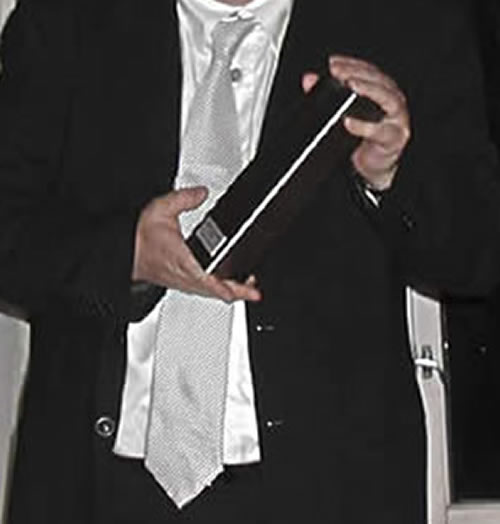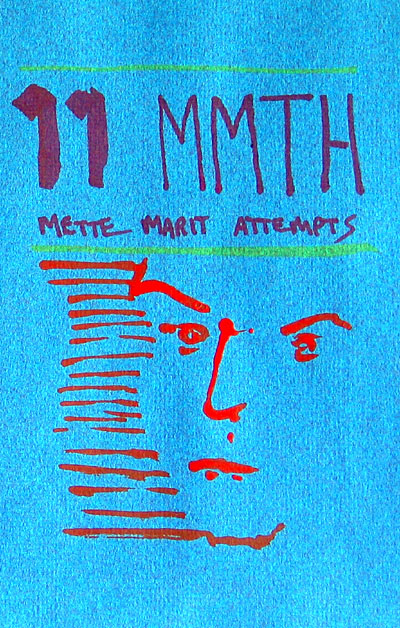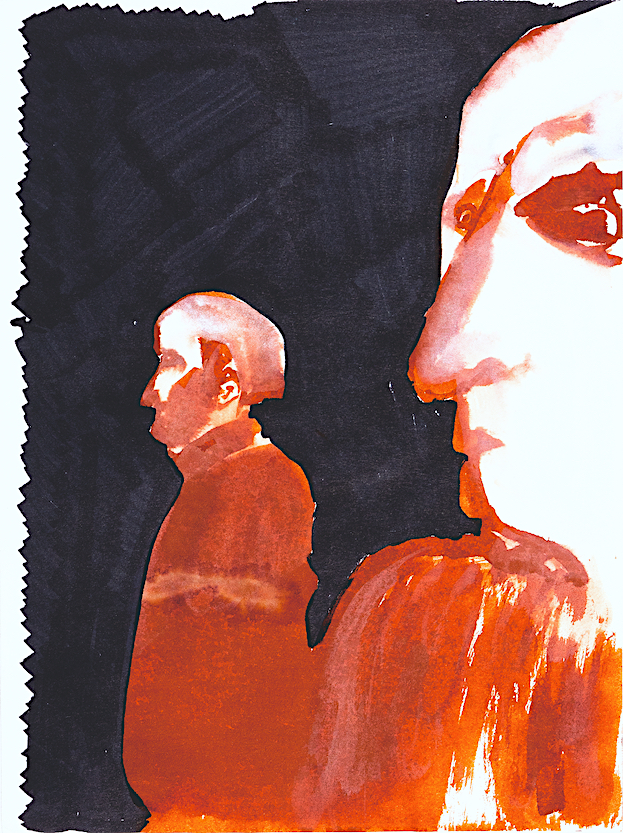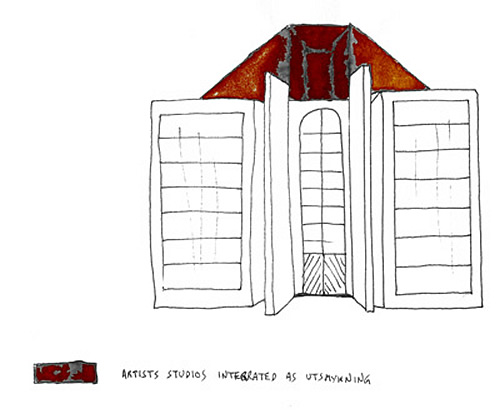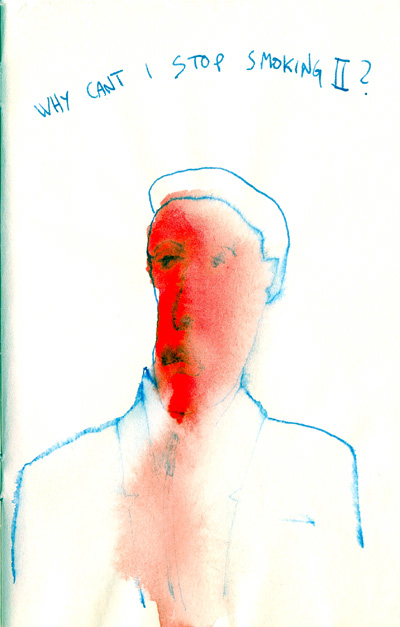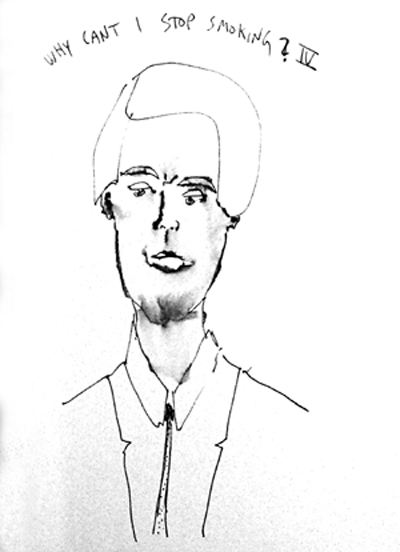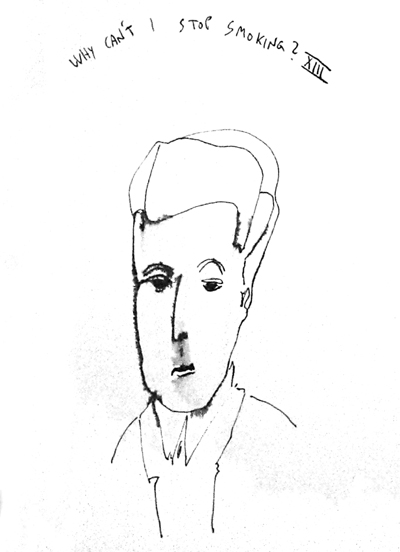A soloshow in Bergen Kunsthall with curator Solveig Øvstebø
A lot of Artist books, drawings and the first Norsk Sokkel Award ceremony
english below
Øystein Ustvedt (2011)
En ny oppmerksomhet om tegning i Nyere Norsk Kunst etter 1990, Fagbokforlaget 2011
excerpts.
I likhet med Kim Hiorthøy lar heller ikke Terje Nicolaisen (f. 1964) seg beskrive eom tegner i tradisjonell forstand. Til gjengjeld står tegning helt sentralt i deres kunstnerskap. For øvrig arbeider de begge like gjerne med musikk som med bilder, og de har en særlig kjærlighet for selvlagde kunstbøker, artist books. Hos Nicolaisen spiller denne sjangeren en mer avgjørende rolle fordi hans verker for det meste består av utkast, forslag og ideer til ikke gjennomførte eller også realiserbare prosjekter. Disse samles opp i enkle, selvlagde kunstbøker men stilles også ut som kunstverk nok i seg selv, gjerne med en systematisk konsekvens som minner om arkivet og bibliotekets funksjon som hukommelsesbank.
Nicolaisens verk er vanskeligere og plassere i et oversiktsverk som dette. Det er tegninger som ofte handler om skulpturelle prosjekter (kapittel 7). De innholdet et vell av metakommentarer og institusjonskritiske elementer (kapittel 6), og i tillegg bygger de på en grunnleggende konseptuell innstilling til kunstnerisk virksomhet og til kunstbegrepet (kapittel 10). Tegningene har preg av innfall, skriblerier og spontane kommentarer, men uten at de virker surrealistiske eller ekspresjonistiske. Den litt rølpete, vitseaktige tonen er mer beslektet med «dårlig» smak eller det Åsmund Thorkildsen har omtalt som «slacker-tegning»; en litt slapp, distrahert innstilling hvor det ikke så mye handler om å utvikle en personlig stil, men heller om en strategisk banalisering og imitert stilfullhet.
Interessen for nonsensisk tullball er påtagelig, og my taler for å se Nicolaisens virksomhet i forlengelse av dadaismen, situasjonistenes og Fluxus-bevegelsens anti-kunst. Ingvild Krogvik har tatt for seg forutsetningene for Nicolaisen serier med utkast og forslag, og hun trekker frem konseptkunsten som en sentral premissleverandør for denne verkstypen, hvor den faktiske virkeliggjøringen spiller en underordnet rolle. Kunstverket blir først og fremst et springbrett for mentale prosesser og handlinger.
En viktig del av Nicolaisens metode er å ta for seg allmenne temaer på en stupid måte, som med slagord av typen: «Å være er å vaske opp». Det kryr av skjeve blikk på kunstinstitusjonens selvhøytidelighet og virkemåter. Som oftest i strek, men også i form av performance, intervensjoner og arrangerte situasjoner. Sammen med Pekka Nevalainen gjennomførte han et gi-bort-prosjekt i 2000: Pekkaterje Giveaway Paintings 2000. Frem fra en vernissagefest i sentrum av Bergen kastet de seg over tilfeldig forbipasserende med bud om å få et kunstverk. Hva som er kunstverket her kan selvfølgelig diskuteres. Det er noe av poenget.
Nicolaisens omgang med gult lys står i en stilling for seg. På en utstilling i Galleri Otto Plonk i Bergen i 1996 kom publikum til en stengt galleridør. Inne var lokalet derimot fullt opp med et kraftig, gult lys som strålte ut gjennom noen ruter. Kunstverkets objektkarakter og kunstsystemets varefetisjisme ble undergravet samtidig som selve kunstrommet ble løftet frem som kilde til energi og innsikt. I forbindelse med Skulpturprosjekt Münster året etter «deltok» han med sitt eget «parasittære» prosjekt der tanken var å lyssette forskjellige bygninger i byen på tilsvarende vis. Både byen og den prestisjefylte kunstutstillingen interveneres på en humoristisk, tankevekkende måte. At de fleste ikke lot seg realisere, er av underordnet betydning. Visualisert i tegninger og smalet i egne kunstbøker vitner dette og andre typer urbane eller stedlig forankrede ideer og forslag om et ønske om å injisere byer, steder og situasjoner med lys og farge.
Det urealiserbare åpner vel å merke også for mer spektakulære prosjekter, som forslaget om å oppføre en gigantisk gul lystavle over industribyen Rjukan i Telemark, et sted omgitt av høye fjell og som mangler sol store deler av vinterhalvåret (Rjukan 2005). Det står ikke på ambisjonsnivået i Nicolaisens slentrende forslag og kommentarer.
Øystein Ustvedt (2011) A new attention to drawing in New Norwegian Art after 1990, Fagbokforlaget 2011
Like Kim Hiorthøy, Terje Nicolaisen (b. 1964) also does not describe eom drawings in the traditional sense. On the other hand, drawing is central to their artistry. By the way, they both work just as much with music as with pictures, and they have a particular love for self-made art books, artist books. At Nicolaisen, this genre plays a more decisive role because his works mostly consist of drafts, suggestions and ideas for unfinished or even realizable projects. These are collected in simple, self-made art books but are also exhibited as works of art enough in themselves, often with a systematic consequence reminiscent of the archive and the library's function as a memory bank.
Nicolaisen's works are more difficult and place in an overview work like this. There are drawings that are often about sculptural projects (Chapter 7). They contain a wealth of meta-commentary and institution-critical elements (Chapter 6), and in addition they build on a basic conceptual approach to artistic activity and to the concept of art (Chapter 10). The drawings are characterized by whims, scribbles and spontaneous comments, but without seeming surreal or expressionist. The slightly jagged, joke-like tone is more akin to "bad" taste or what Åsmund Thorkildsen has referred to as "slacker drawing"; a slightly limp, distracted attitude where it is not so much about developing a personal style, but rather about strategizing and imitating stylishness.
The interest in nonsensical customs is palpable, and my talk is to see Nicolaisen's activities in the wake of Dadaism, the situationalists and the Fluxus movement's anti-art. Ingvild Krogvik has considered the preconditions for the Nicolaisen series with drafts and proposals, and she emphasizes concept art as a central premise supplier for this type of work, where actual realization plays a minor role. The work of art is first and foremost a springboard for mental processes and actions.
An important part of Nicolaisen's method is to deal with general themes in a stupid way, as with slogans of the type: "Being is washing up". The art institution's self-solemnity and behaviors are skewed. Most often in the line, but also in the form of performance, interventions and arranged situations. Together with Pekka Nevalainen, he completed a give-away project in 2000: Pekkaterje Giveaway Paintings 2000. Coming from a vernissage party in the center of Bergen, they threw over random passers-by with a bid to get a work of art. What is the artwork here can of course be discussed. That's some of the point.
Nicolaisen's dealings with yellow light stand in a position for themselves. At an exhibition at Gallery Otto Plonk in Bergen in 1996, the audience came to a closed gallery door. Inside, on the other hand, the room was filled with a powerful yellow light that radiated through some windows. The artwork's object character and the art system's commodity fetishism were undermined while the art room itself was highlighted as a source of energy and insight. In connection with the Münster Sculpture Project the following year, he "participated" with his own "parasitic" project where the idea was to light different buildings in the city in a similar way. Both the city and the prestigious art exhibition intervene in a humorous, thought-provoking way. That most people did not realize is of minor importance. Visualized in drawings and narrowed in own art books, this and other types of urban or locally rooted ideas and suggestions of a desire to inject cities, places and situations with light and color testify.
The unrealistic opens up to even more spectacular projects, such as the proposal to erect a gigantic yellow light board over the industrial town of Rjukan in Telemark, a place surrounded by high mountains and lacking sun for much of the winter season (Rjukan 2005). It is not at the level of ambition in Nicolaisen's striking suggestions and comments.

